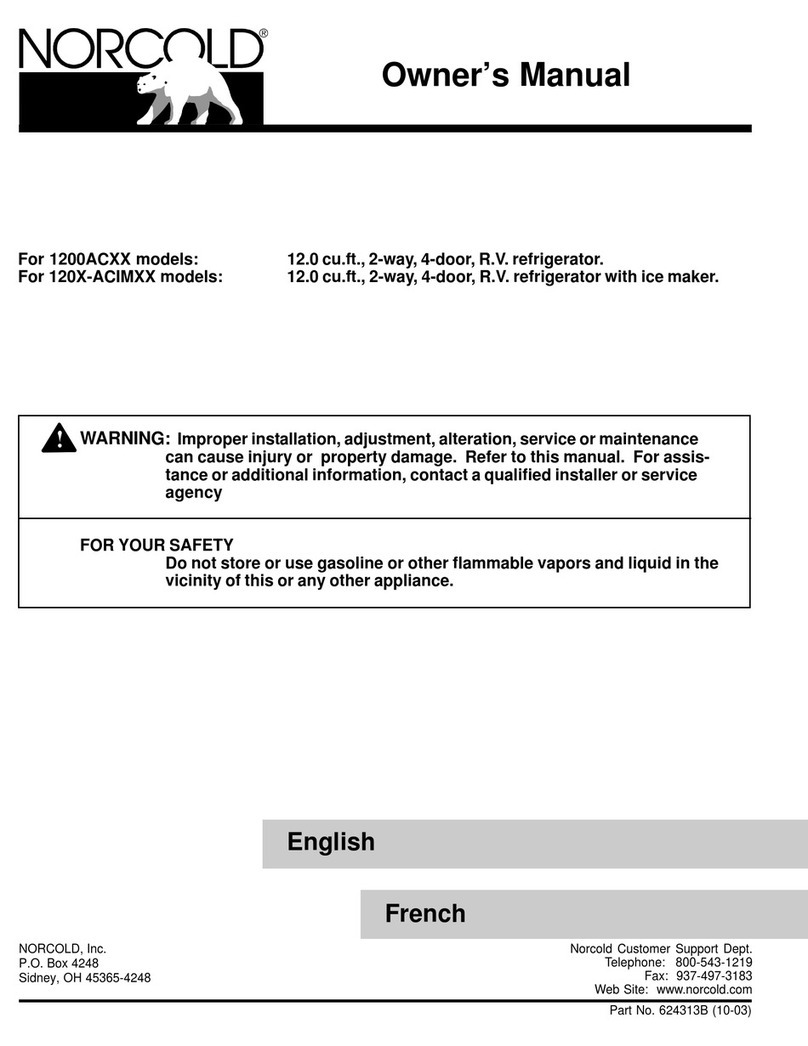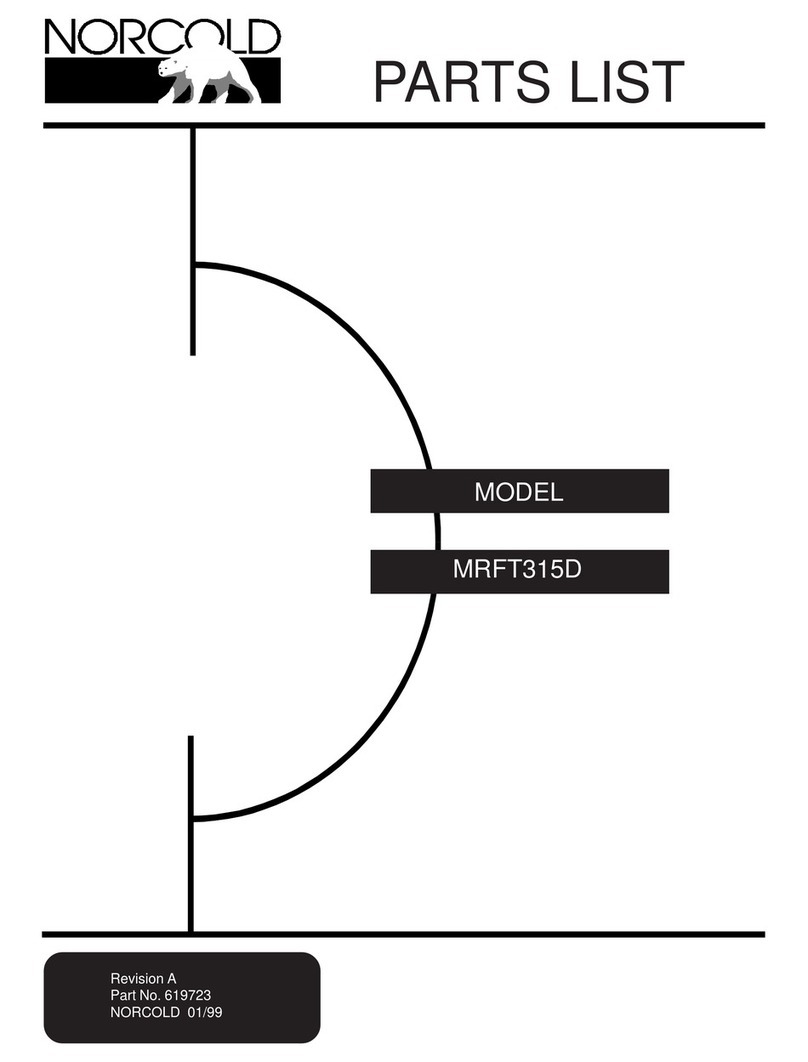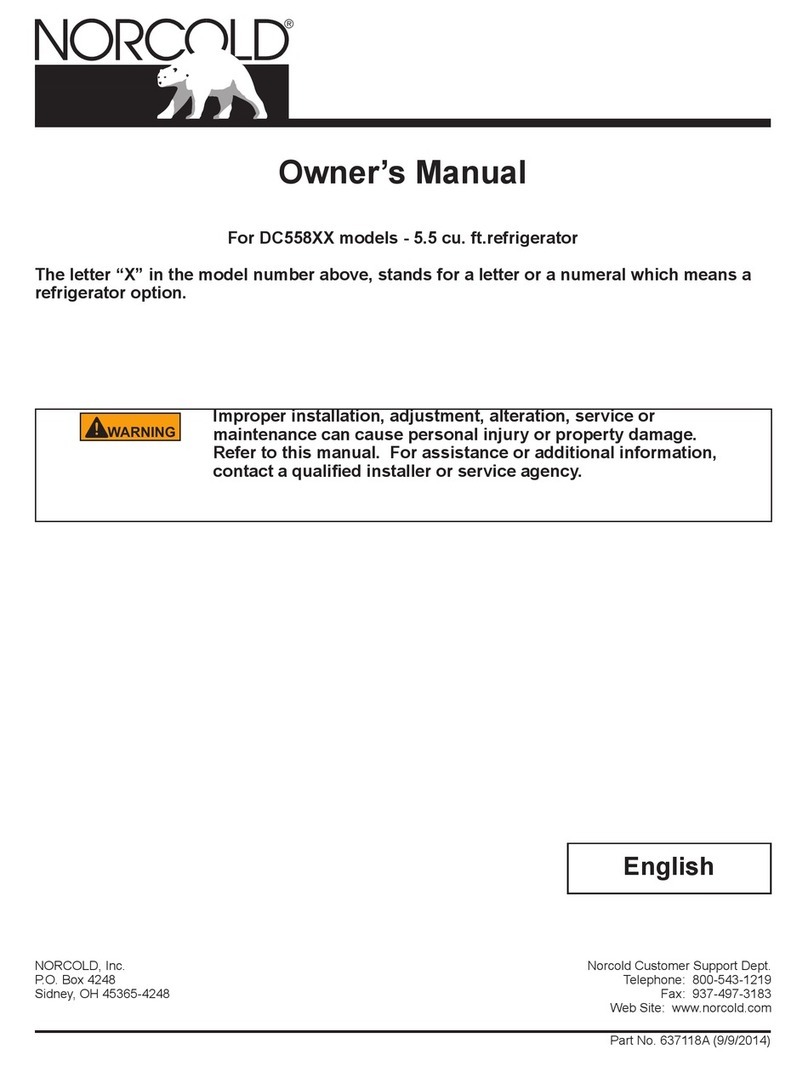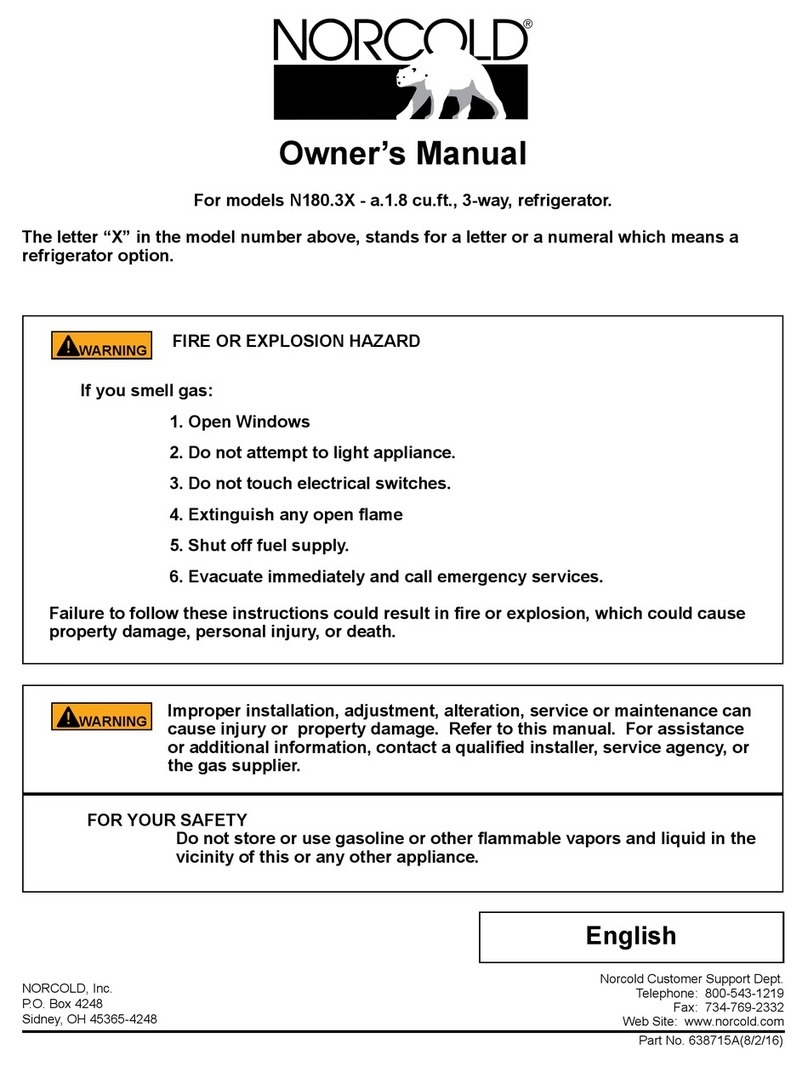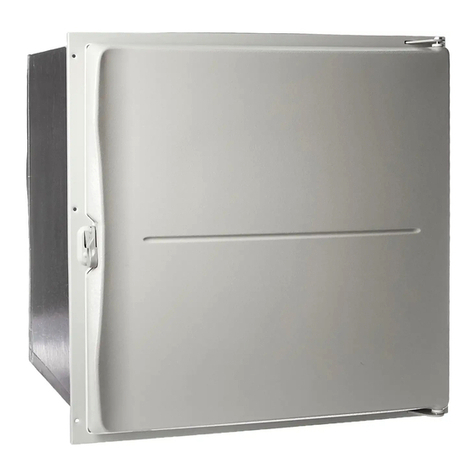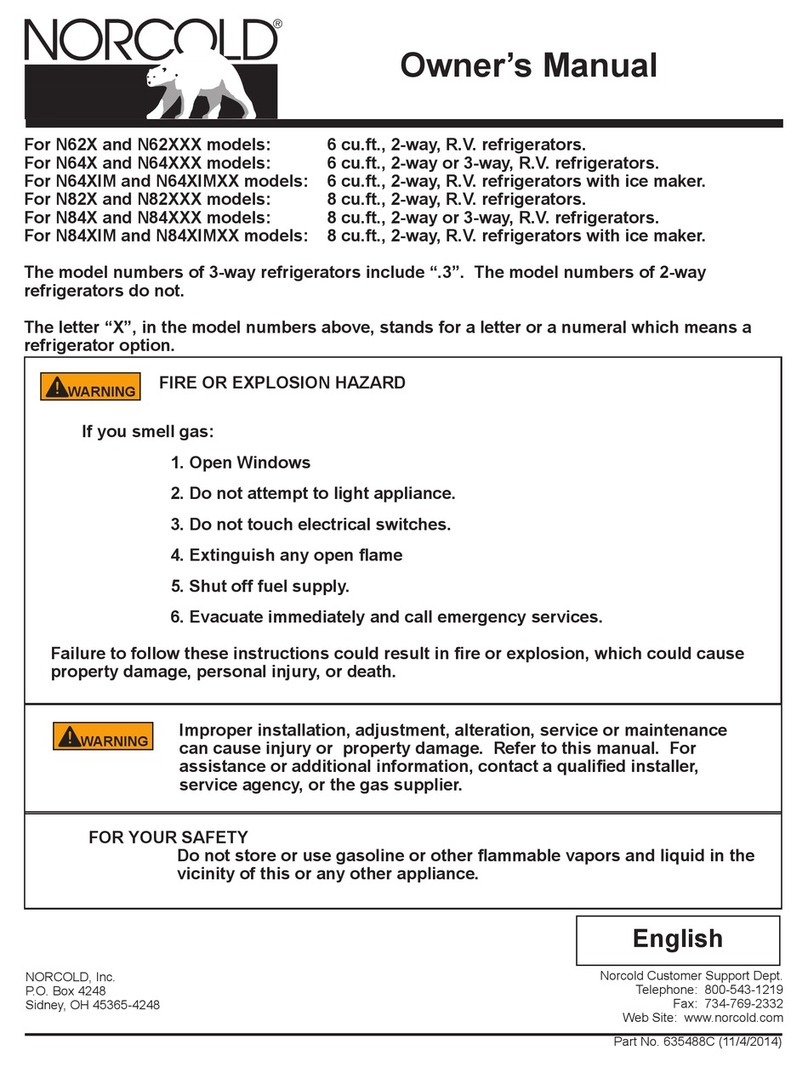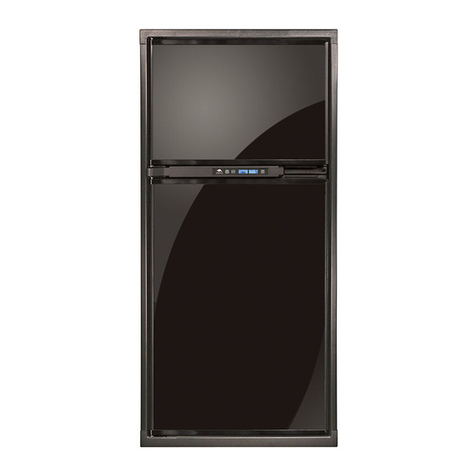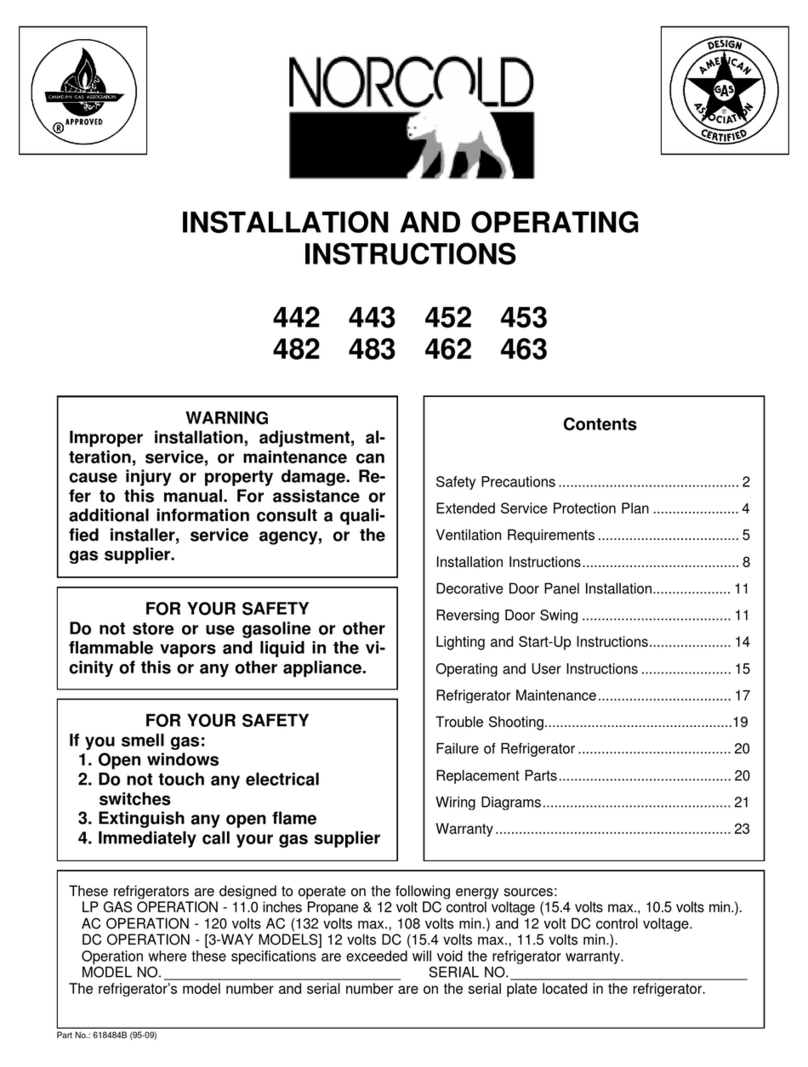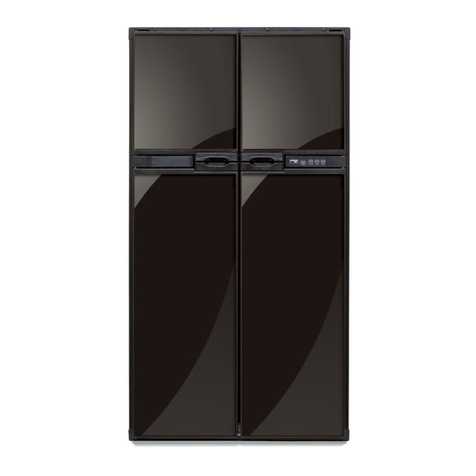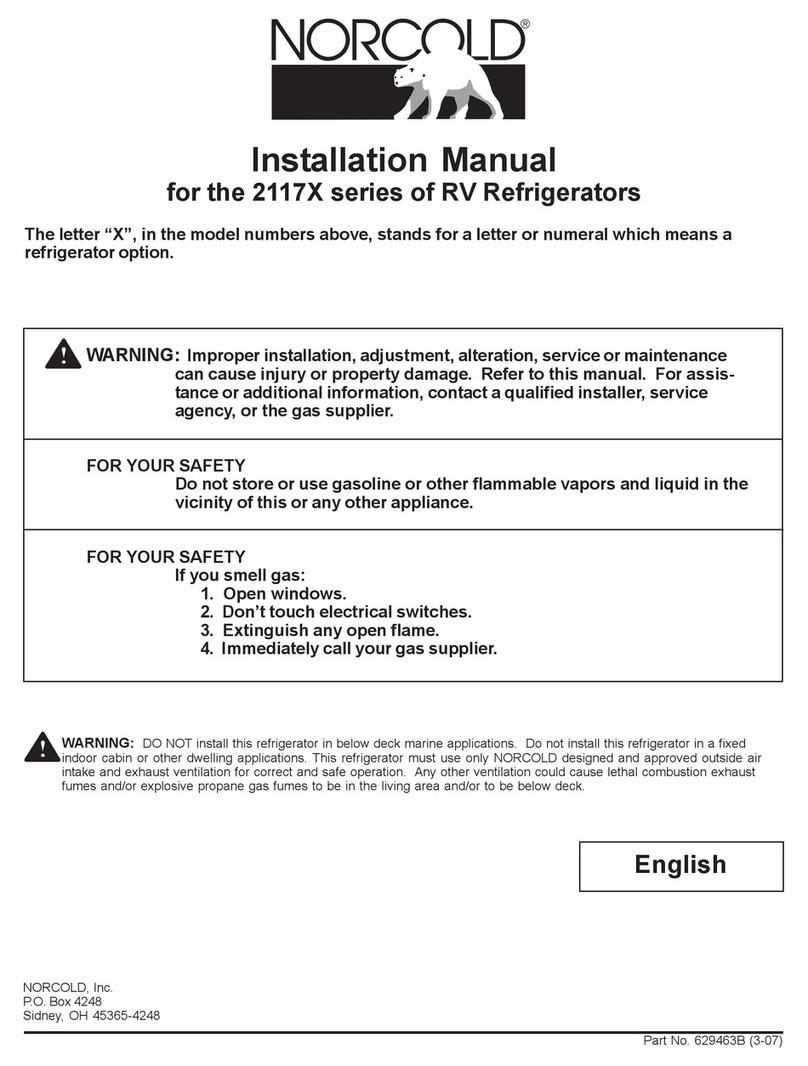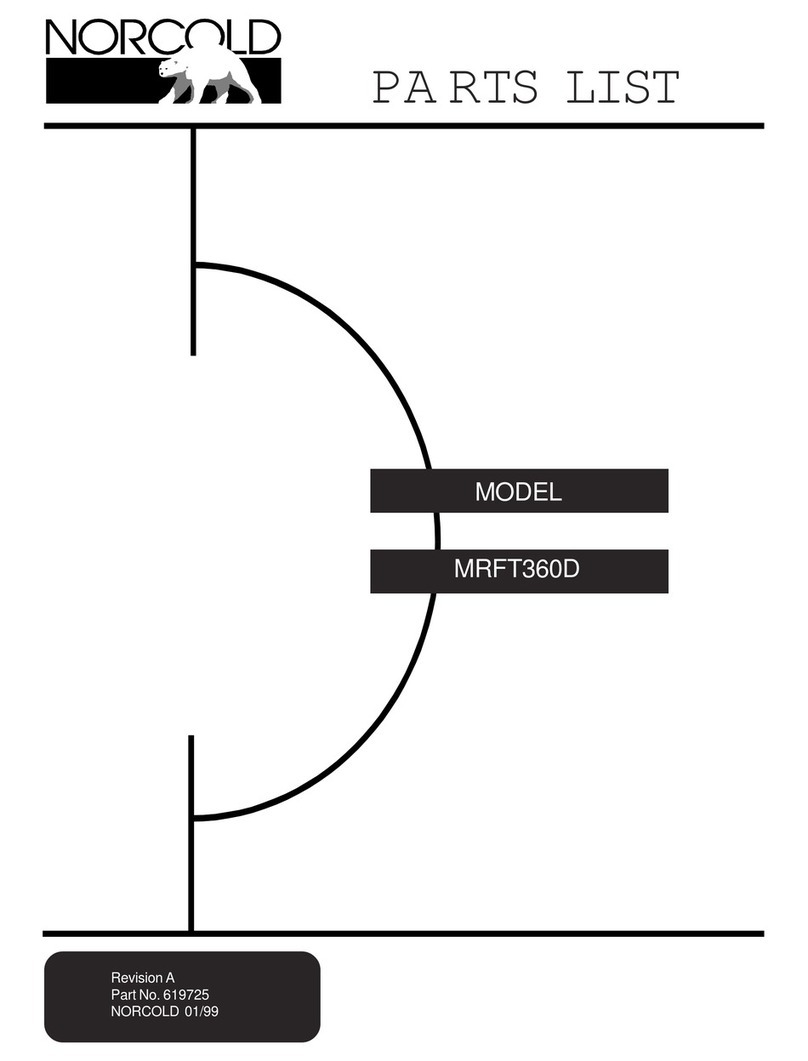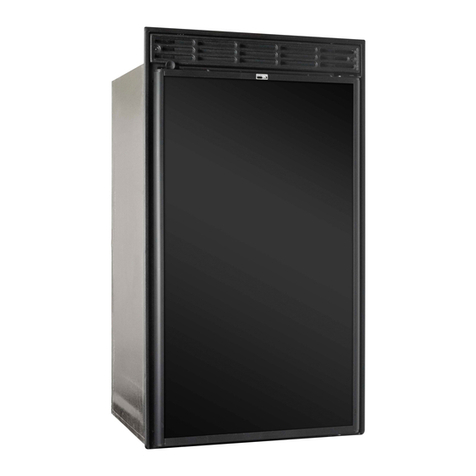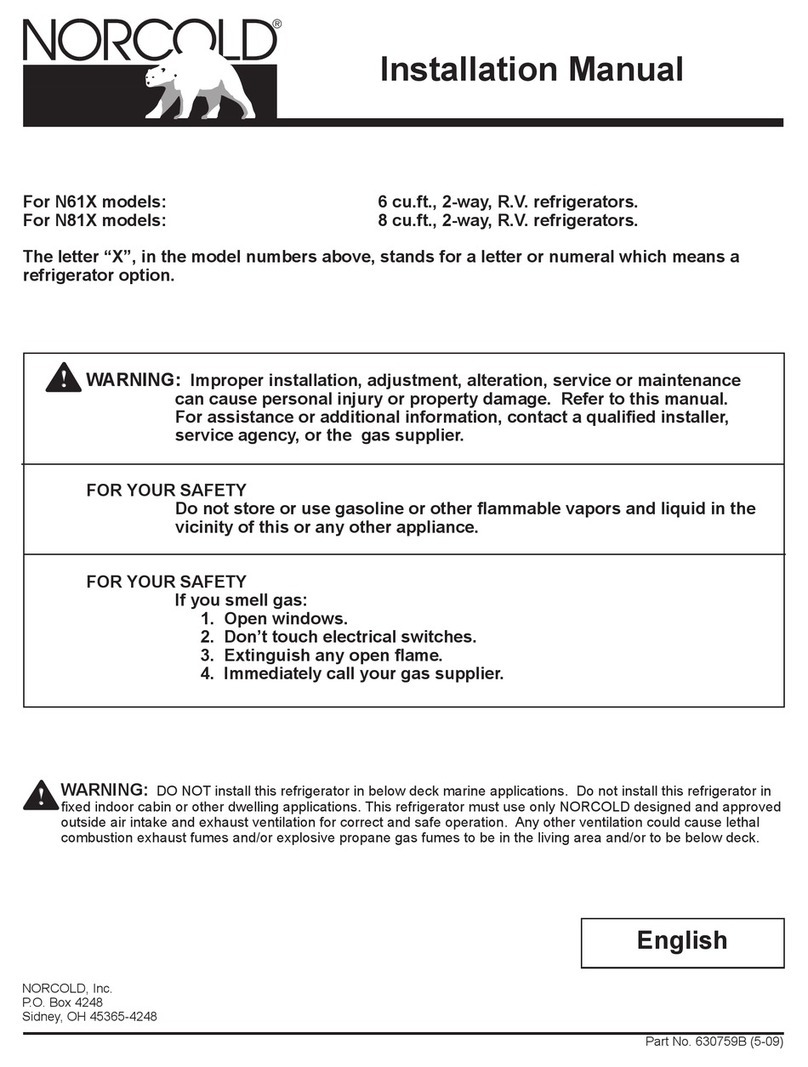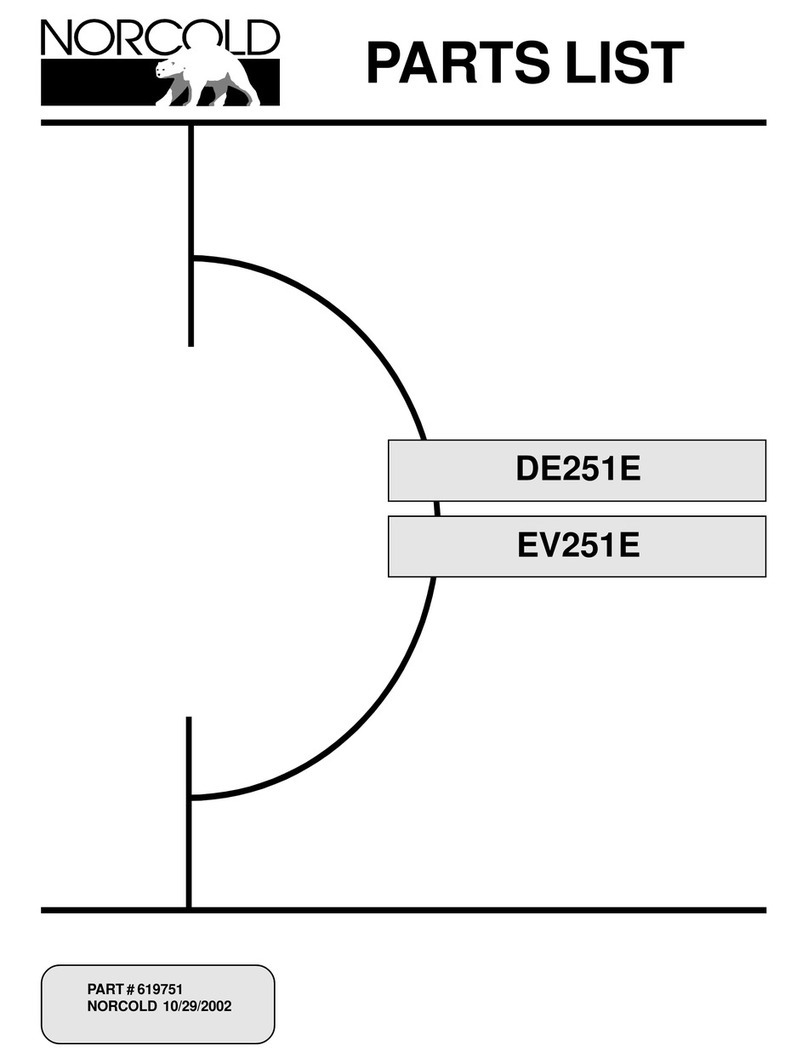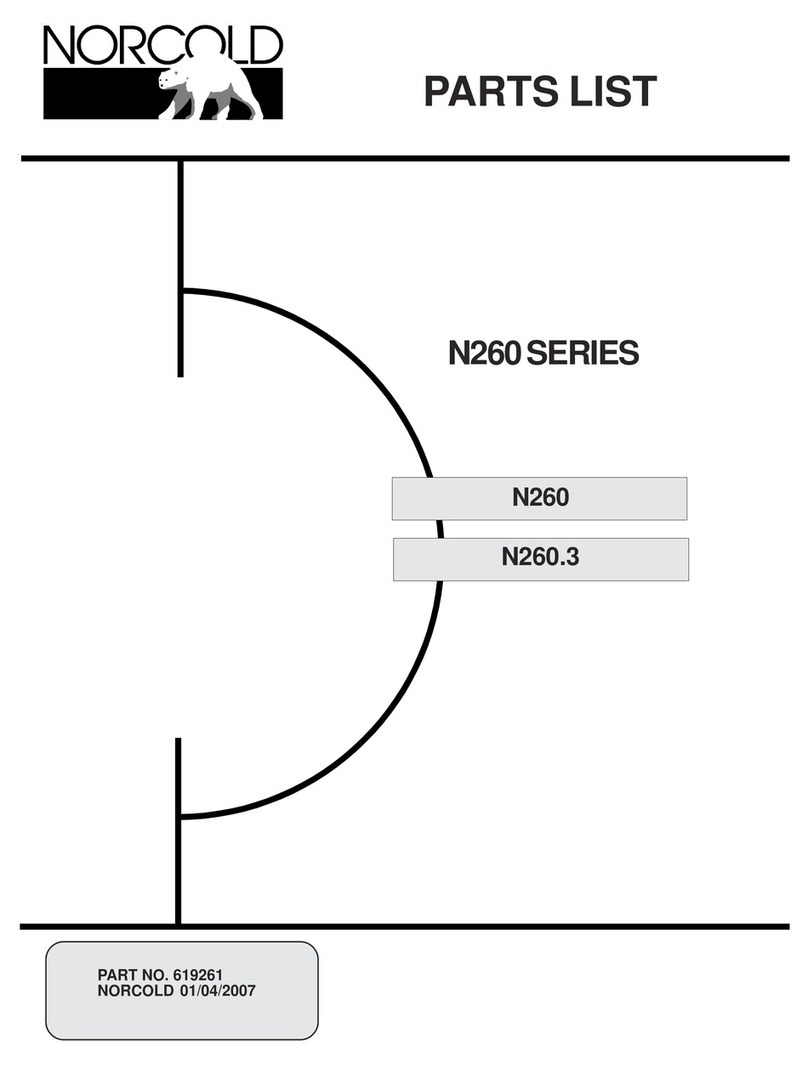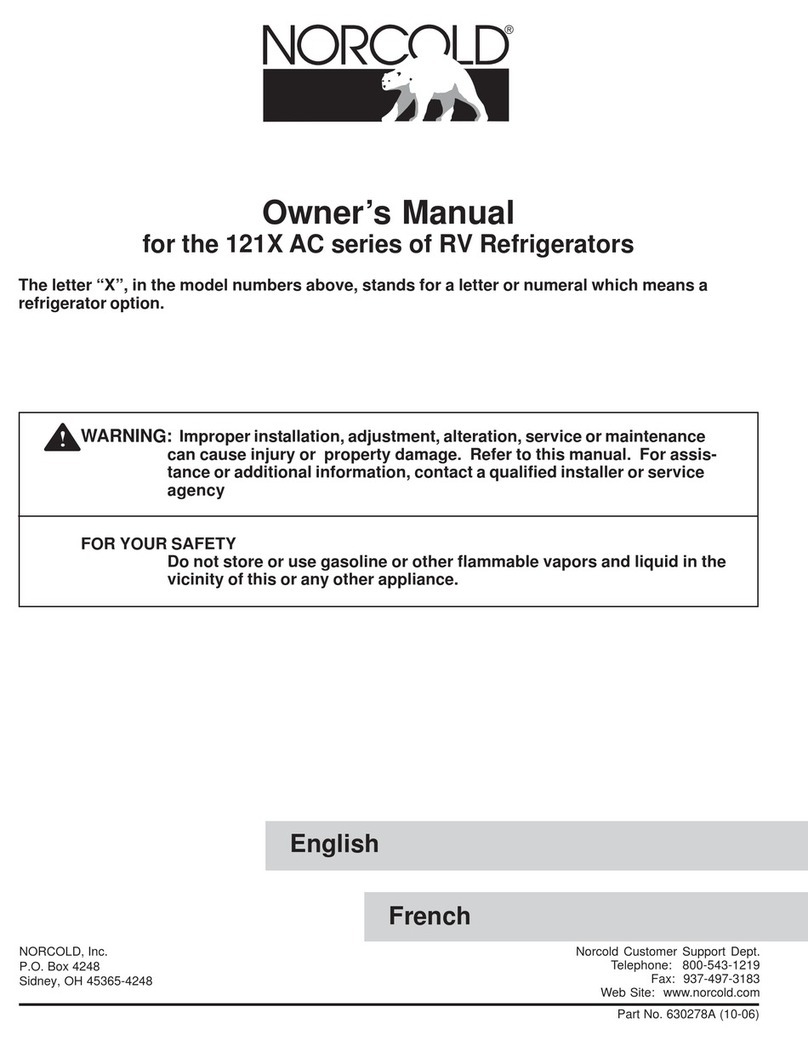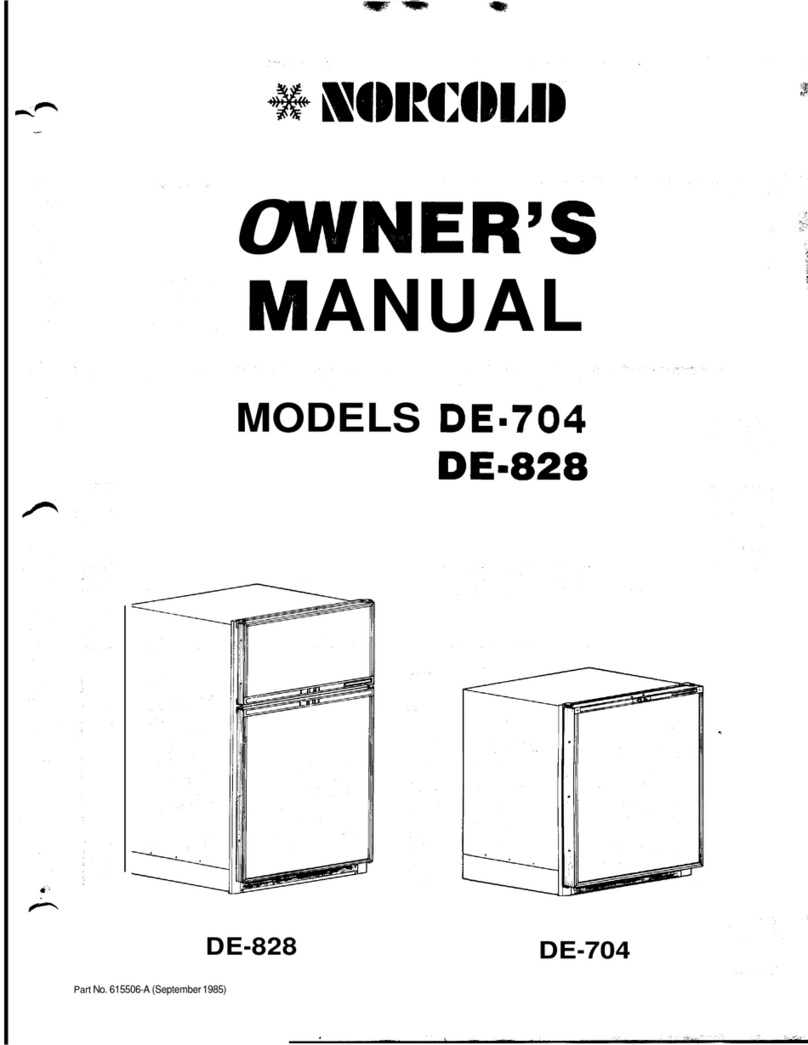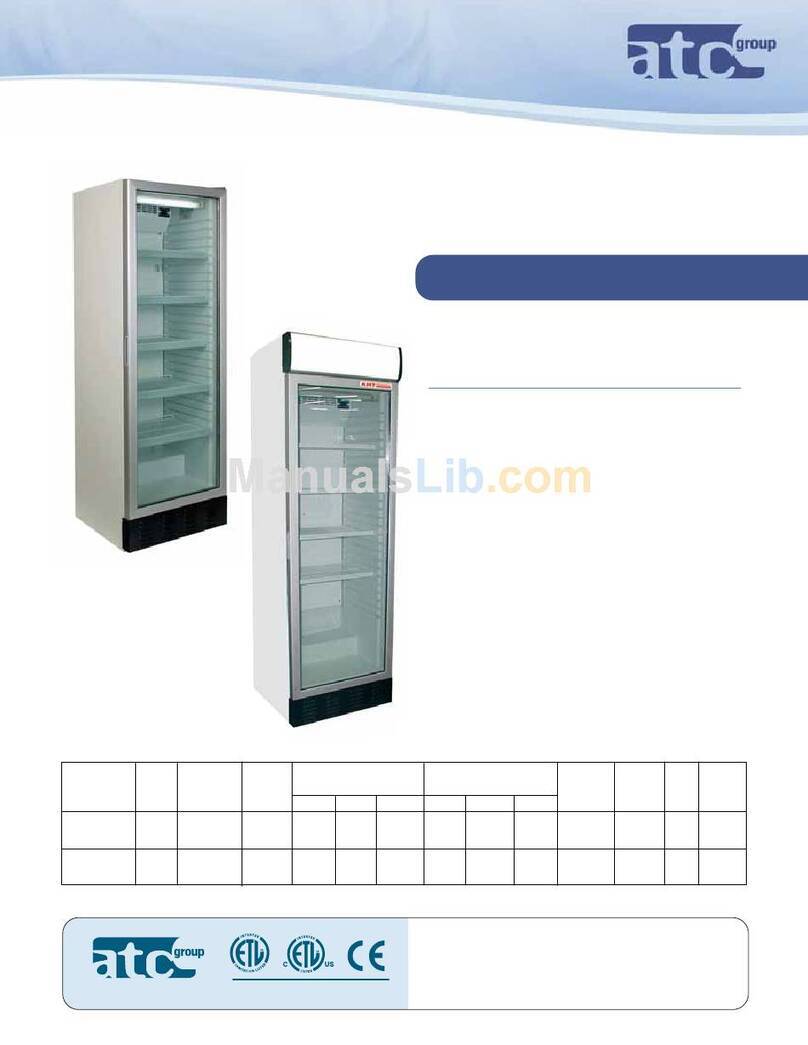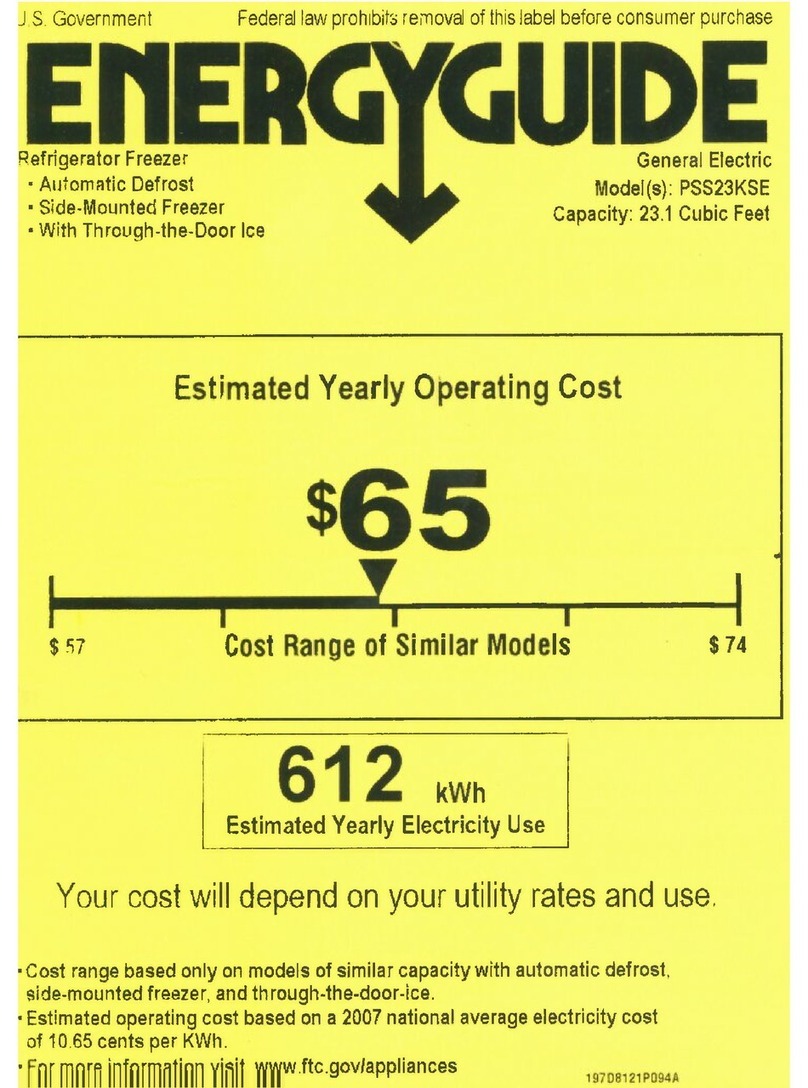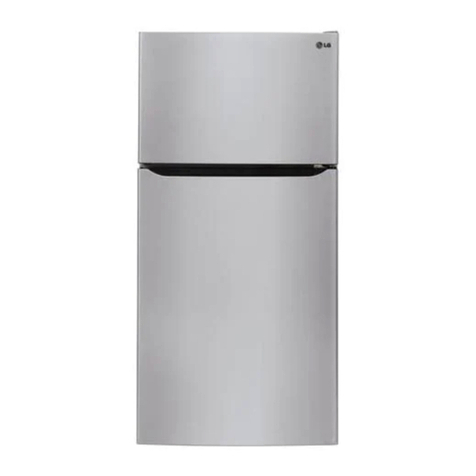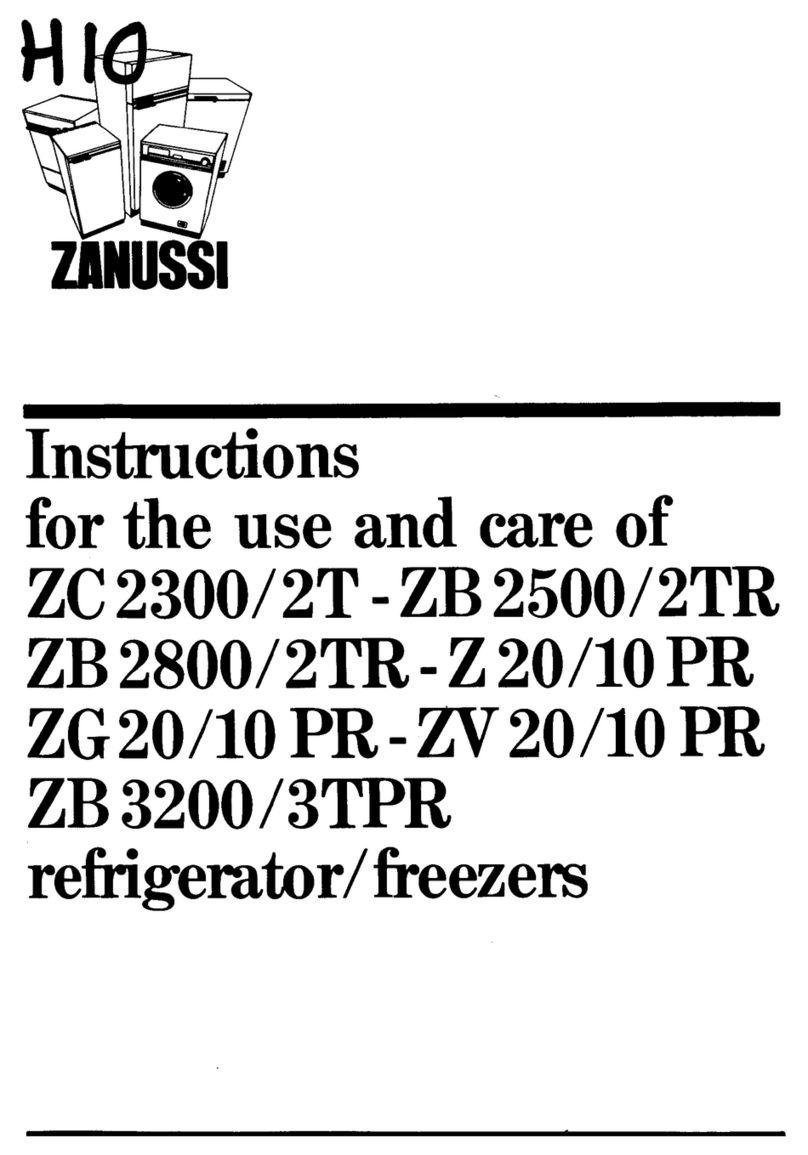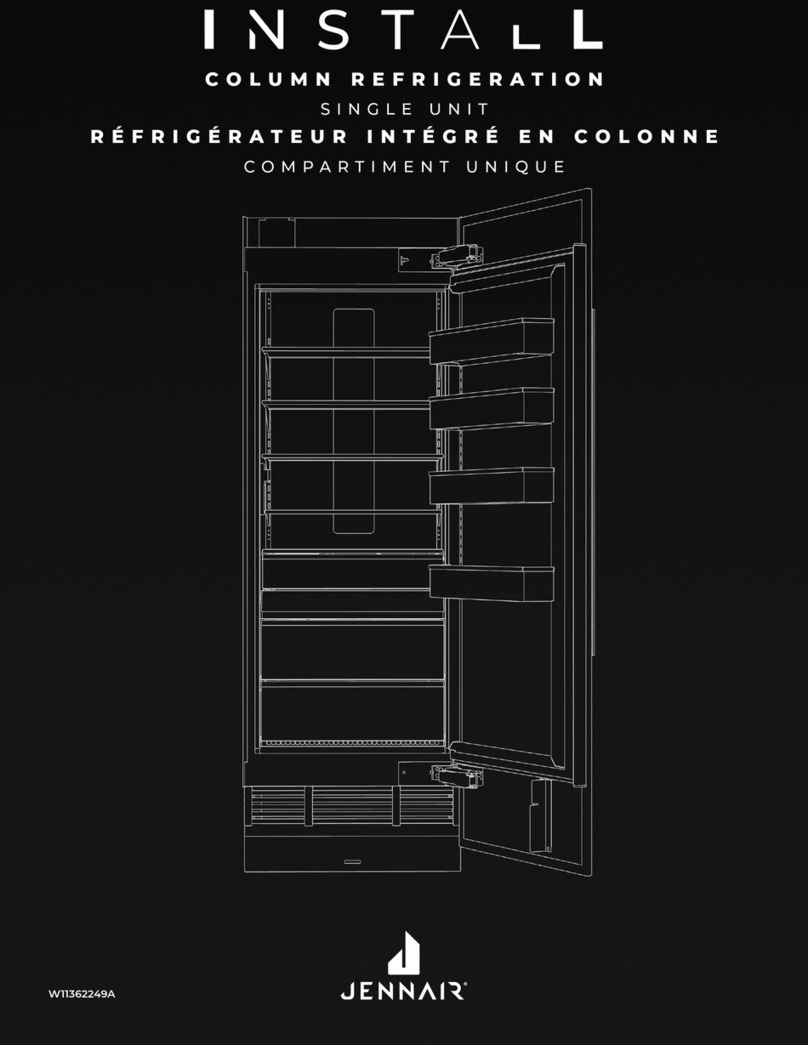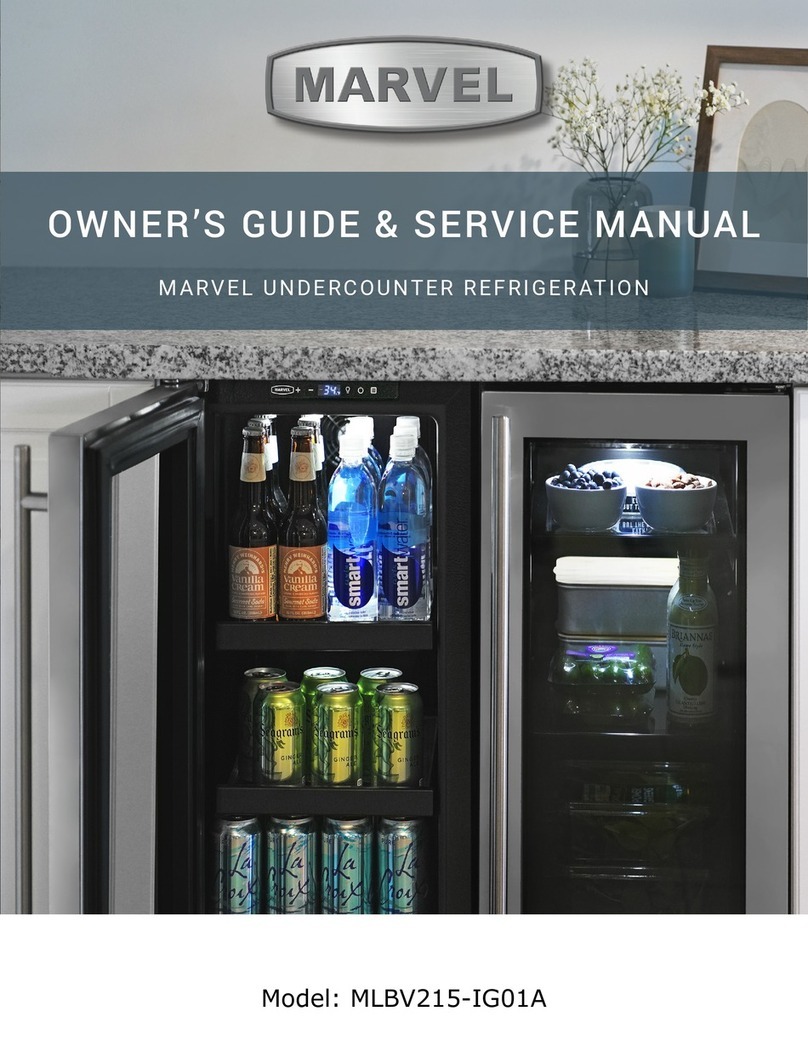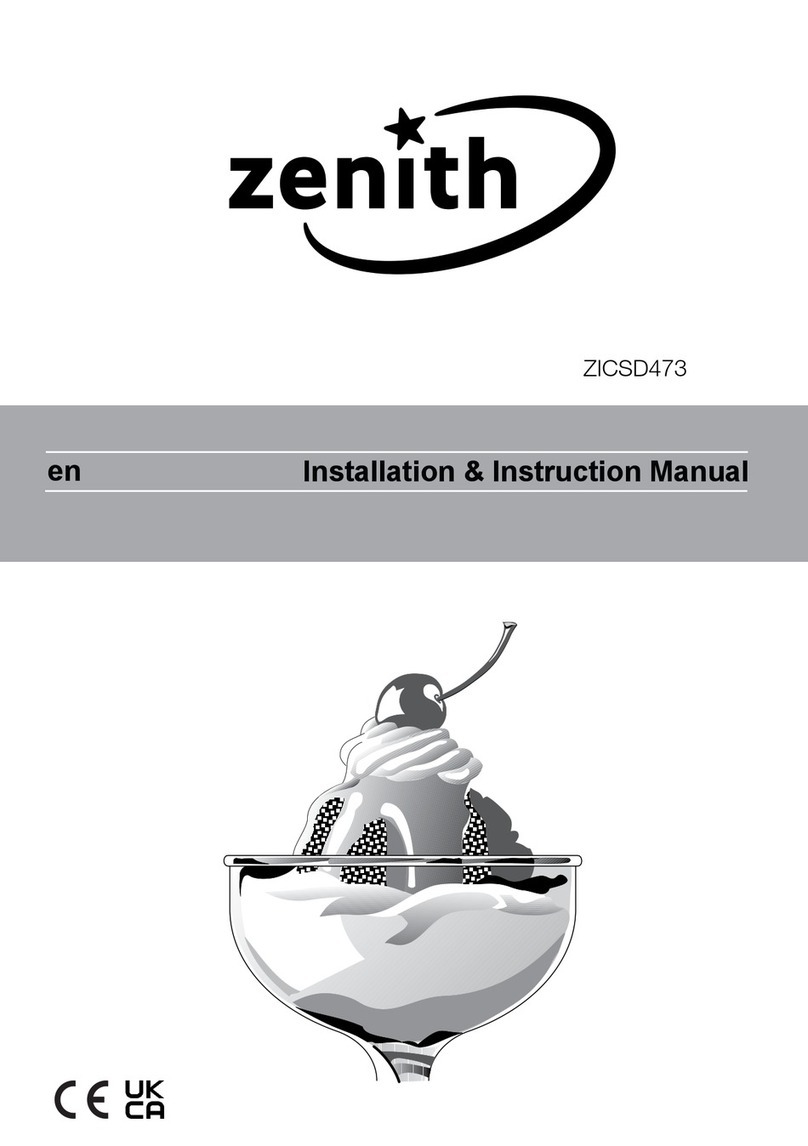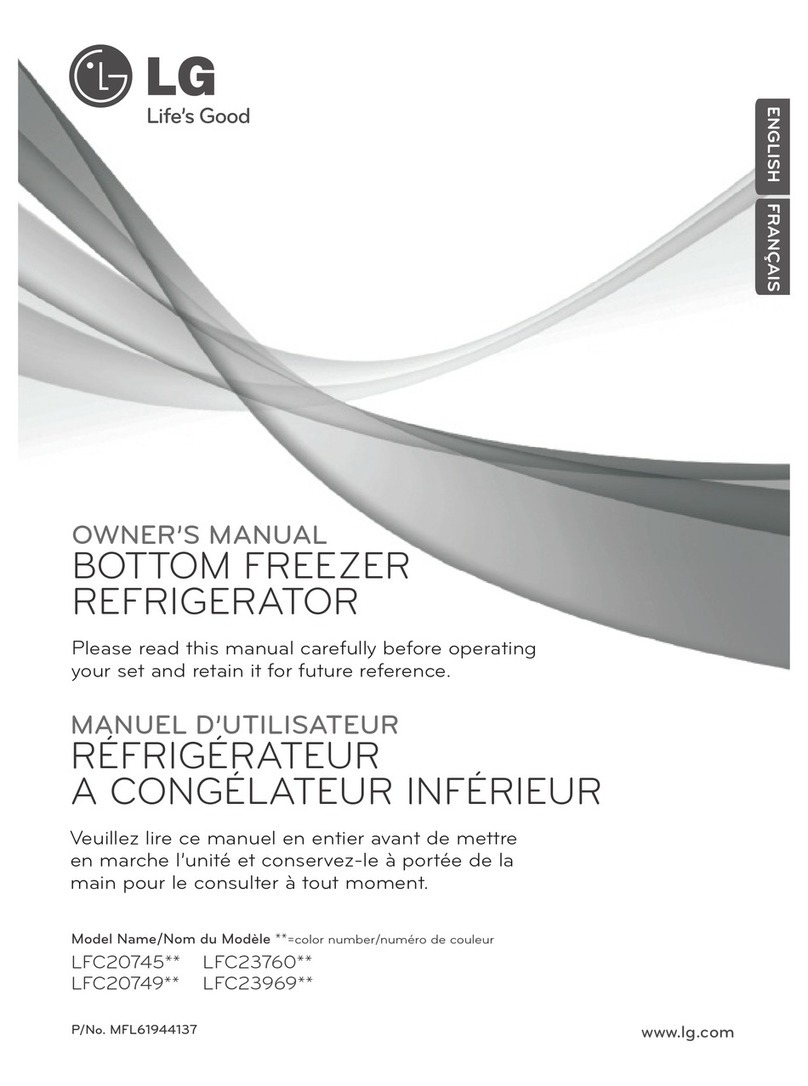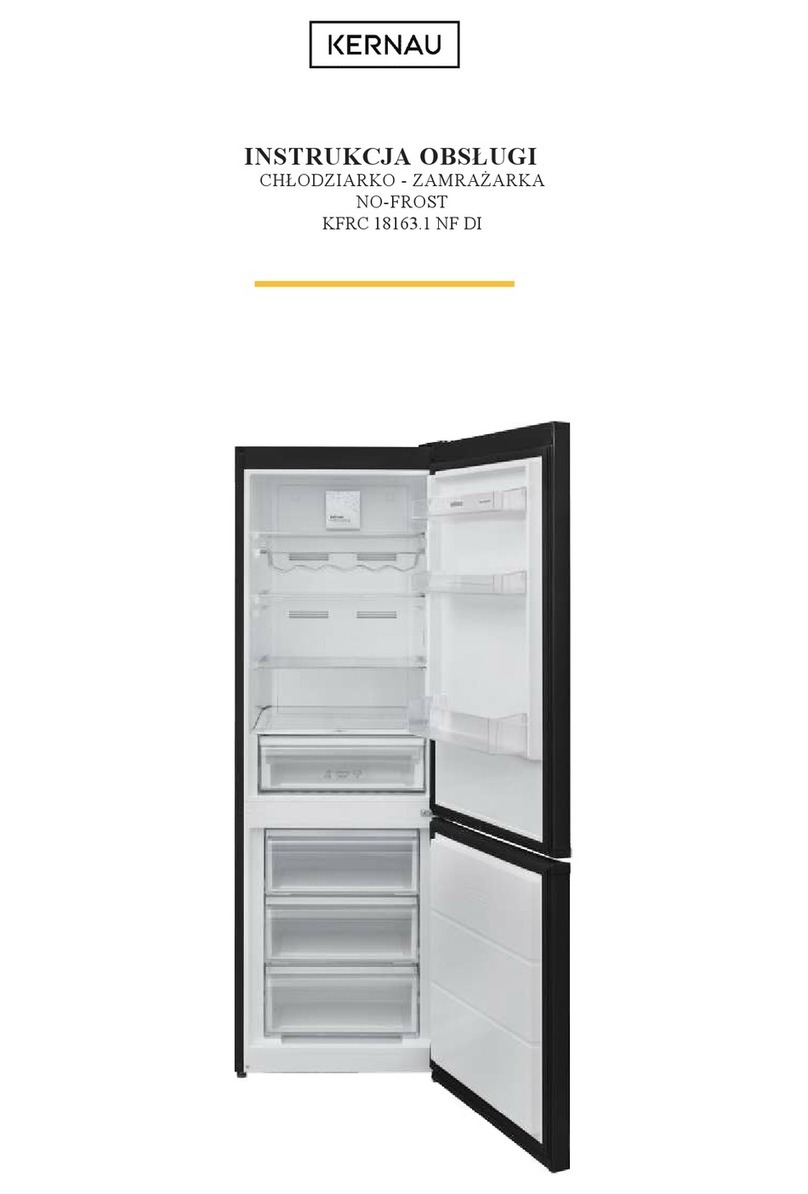
www.norcold.com/cda 13
NX6 / NX8 / NXA ModelsRefrigerator Service Manual
Auto AC Mode
When operating in the Auto AC mode the power board
measures the thermistor value and communicates it to the
optical display board. The thermistor, a temperature device
whose internal resistance goes down as the temperature goes
up, is connected to the power board via terminals P2-1 and
P2-6. The optical display board compares the actual thermistor
value to preset cut-in and cut-out temperature values for each
of the particular temperature settings. Should the thermistor
value fall below a particular cut-in value it will request the
power board to turn ON the AC heater relay (K2). Should the
thermistor value go above a particular cut-out value it will
request the power board to turn OFF the AC heater relay.
Anytime relay K2 is turned ON, AC voltage is applied to
the AC heater via the now closed K2 contacts. Anytime AC
voltage is applied to the AC heater, AC current is produced.
This AC current is measured by the power board and its
value communicated to the optical display board. The optical
display board determines if the AC current is within specified
limitations. If below the minimum specified limit, the optical
display board will automatically default to the Auto LP Gas
Mode and request the power board to operate via the Auto
LP Gas Mode. AC related faults (Voltage or Current) are not
displayed while operating in the Auto Mode of operation.
Auto LP Gas Mode
When operating in the Auto LP Gas mode the power board
measures the thermistor value and communicates it to the
optical display board. The thermistor, a temperature device
whose internal resistance goes down as the temperature goes
up, is connected to the power board via terminals P2-1 and
P2-6. The optical display board compares the actual thermistor
value to preset cut-in and cut-out temperature values for each
of the particular temperature settings. Should the thermistor
value fall below a particular cut-in value the optical display
board simultaneously requests the power board to turn ON gas
valve relay (K1) and high voltage transformer (T1) outputs.
Anytime relay K1 is turned ON, 12VDC passes through the
now closed K1 contacts to terminal P1-10 of the power board
and out to the gas valve solenoid, energizing the gas valve.
With the gas valve energized LP gas flows to the burner
tube. Simultaneously, energy pulses from the high voltage
transformer (T1) are carried out to the burner via the spark
sense electrode wire. As the energy pulses reach the end of
the electrode they jump across the gap between the electrode
and the burner creating sparks. The sparks ignite the LP gas
and a flame is established.
Via the flame rectification process a signal is then sent back to
the power board through the spark sense electrode wire letting
the power board know there is a flame present. Knowing
a flame is present; the power board deactivates the spark
output. At the same time; the power board communicates to
the display letting it know a flame is now present.
When the thermistor value reaches a particular cut-out value
the optical display will request the power board to turn OFF the
gas valve output, allowing the flame to extinguish. If for some
reason the flame goes away while there is a call for cooling,
the power board will turn the high voltage transformer back
on and attempt to re-ignite the propane. For safety reasons
the sparking at the burner (trial for ignition time) will last a
maximum of 30 seconds, at which time the gas valve/high
voltage transformer outputs will be turned off and the LP Gas
mode will be locked out.
2-way models will automatically default back to the Auto AC
mode and wait, indefinitely, for AC voltage to return. The
optical display board will display:
• NX61 / NX81: Solid RED power indicator light
• NX64 / NX84: "no AC" "no FL" with audible alarm/
beeper
• NXA64 / NXA84: "no AC" "no FL" with audible
alarm/beeper
3-way models will automatically default to the Auto DC mode
and request the DC board to operate via the Auto DC Mode.
Auto DC Mode (3-way models only)
When operating in the Auto DC mode the power board
measures the thermistor value and communicates it to the
optical display board. The thermistor, a temperature device
whose internal resistance goes down as the temperature goes
up, is connected to the power board via terminals P2-1 and
P2-6. The optical display board compares the actual thermistor
value to preset cut-in and cut-out temperature values for each
of the particular temperature settings. Should the thermistor
value fall below a particular cut-in value the optical display
board requests the DC board to turn ON DC heater relay (K1).
Should the thermistor value go above a particular cut-out
value it will request the DC board to turn OFF the DC heater
relay. Anytime relay K1 on the DC board is turned ON, 12VDC
passes through the now closed K1 contacts to terminal DC_
HTR of the DC board and out to the DC heater. Any time DC
voltage is applied to the DC heater, DC current is produced.
This DC current is measured by the DC board and its value
communicated to the optical display board. The optical
display board determines if the DC current is within specified
limitations. If below the minimum specified limit, the optical
display board will display:
• NX64.3 / NX84.3: "dc HE" with audible alarm/beeper
• NXA64.3 / NXA84.3: "dc HE" with audible alarm/beeper
•
Background Operations
Interior Light / Door Switch
The interior-light/door switch is a normally open reed switch
that is an integral component of the optical display board.
The magnetic pull from a permanent magnet located
underneath the top door trim maintains the reed switch
(N) contacts closed (light off) when the door is fully closed.
Opening the door breaks the magnetic pull, which in turn
causes the reed switch contacts to open (light on). The optical
display board senses the reed switch contacts are open and in
turn:
• Requests that the power board turn ON the K4
relay. Anytime relay K4 on the power board is
turned ON, 12VDC passes through the now closed
K4 contacts to terminal P1-7 of the power board
and out to the interior light.
• Initiates a 2-minute timer that once timed out
requests the power board to turn off the K4 relay.
This prevents the interior light from being left on in
the event the door is not completely shut. NX64/
NX84, NXA64 / NXA84 model refrigerators will also
display: "dr" with an audible alarm/beeper.
Note: Anytime the door is sensed open the
divider heater output will be turned off.
Theory of Operation - Interior Light / Door Switch
Theory of Operation - cont’d.





















